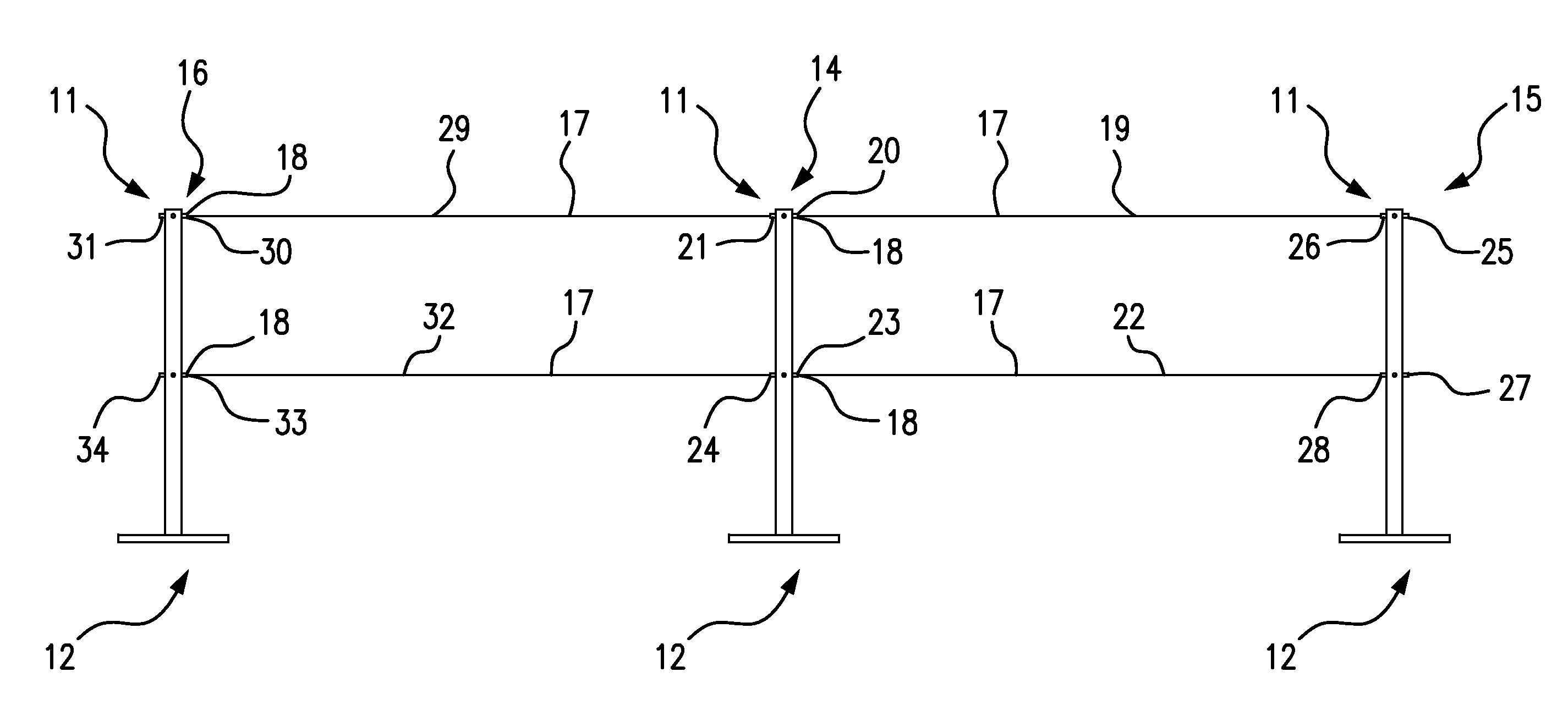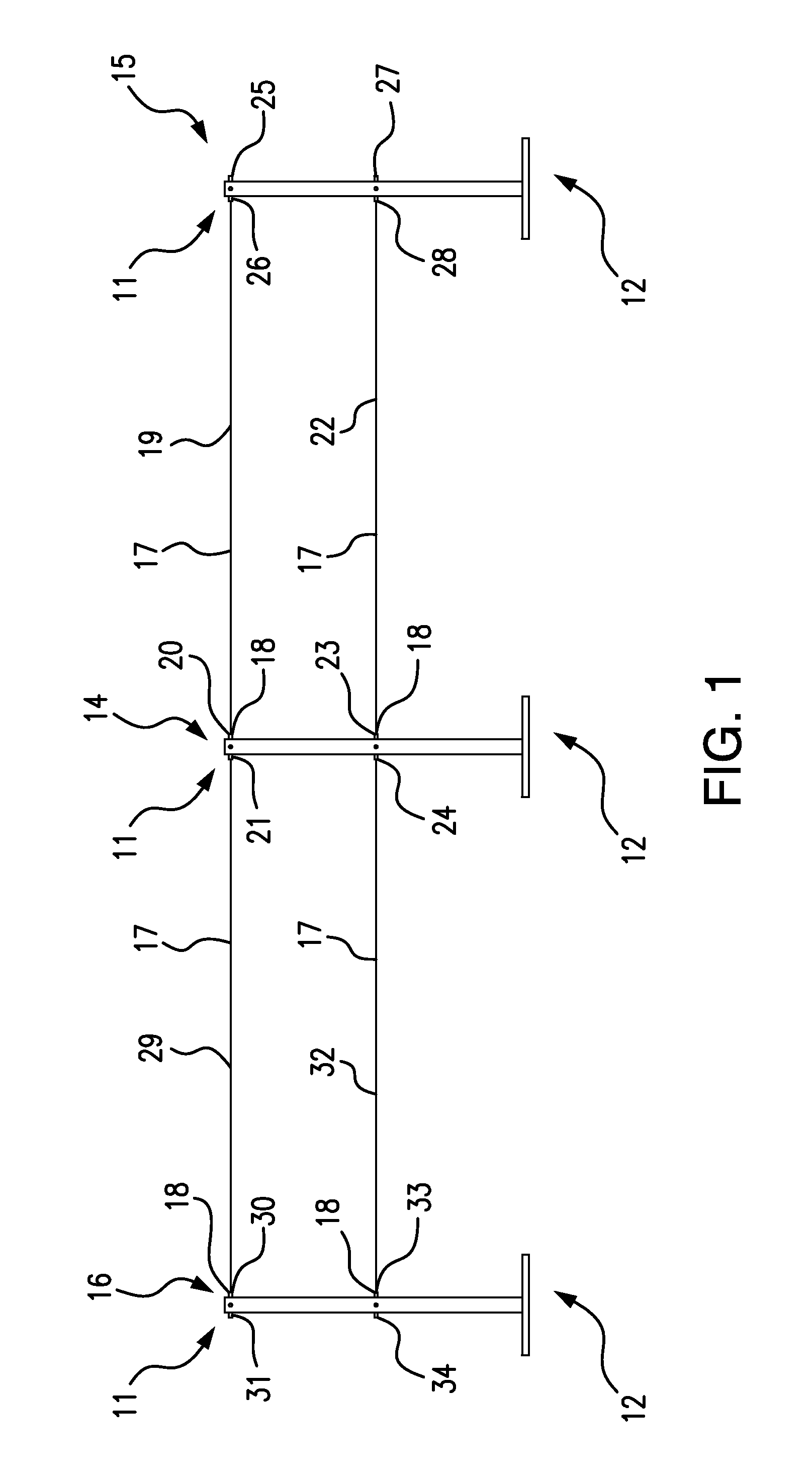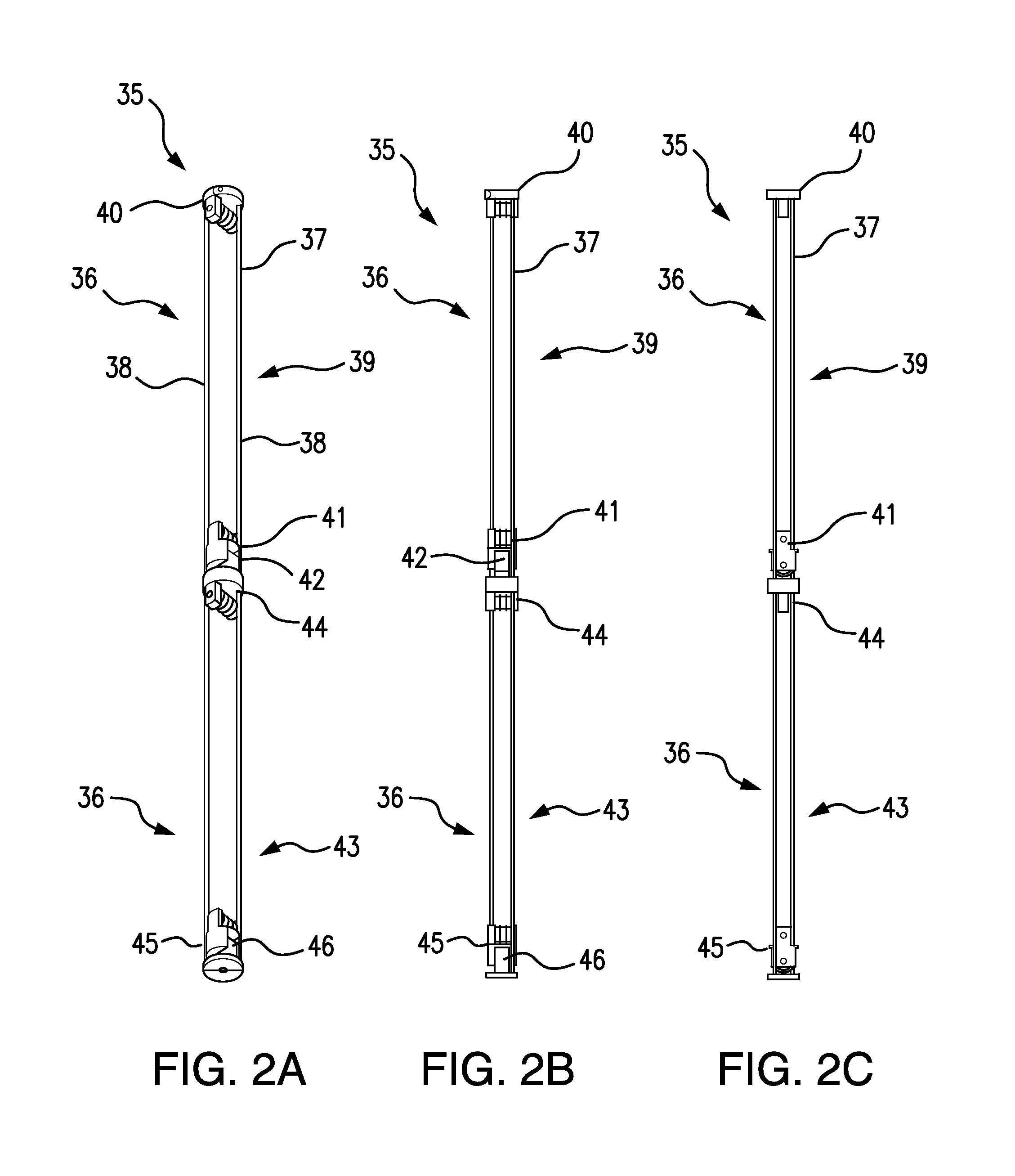Retractable Cord Queue Barrier System
a barrier system and retractable cord technology, applied in the direction of doors/windows, curtain suspension devices, doors, etc., can solve the problems of inability to maintain the constant refraction force of the spring, the inability to balance between, and the inability to deploy retractable belts or tape restraints between the stanchions
- Summary
- Abstract
- Description
- Claims
- Application Information
AI Technical Summary
Benefits of technology
Problems solved by technology
Method used
Image
Examples
Embodiment Construction
[0028]Referring to FIG. 1, an exemplary queue barrier system 10 according to the present invention comprises three (3) tubular stanchions 11, each supported by a weighted base 12. Alternately, each of the stanchions can be anchored in a floor socket 13, of which FIGS. 7A-7D depict an illustrative example.
[0029]In FIG. 1, a first stanchion 14 is releasably connected to a second stanchion 15 by two retractable elastic cords 17, which extend from two cord apertures 18 in the first stanchion 14. A first upper cord 19 extends from a first upper cord aperture 20 of the first stanchion 14 and releasably attaches to a second upper cord connector 26 of the second stanchion 15. A first lower cord 22 extends from a first lower cord aperture 23 of the first stanchion 14 and releasably attaches to a second lower cord connector 28 of the second stanchion 15.
[0030]The reason for having both upper and lower cords 17 interconnecting the stanchions 11 is compliance with ADA requirements, with the low...
PUM
 Login to View More
Login to View More Abstract
Description
Claims
Application Information
 Login to View More
Login to View More - R&D Engineer
- R&D Manager
- IP Professional
- Industry Leading Data Capabilities
- Powerful AI technology
- Patent DNA Extraction
Browse by: Latest US Patents, China's latest patents, Technical Efficacy Thesaurus, Application Domain, Technology Topic, Popular Technical Reports.
© 2024 PatSnap. All rights reserved.Legal|Privacy policy|Modern Slavery Act Transparency Statement|Sitemap|About US| Contact US: help@patsnap.com










